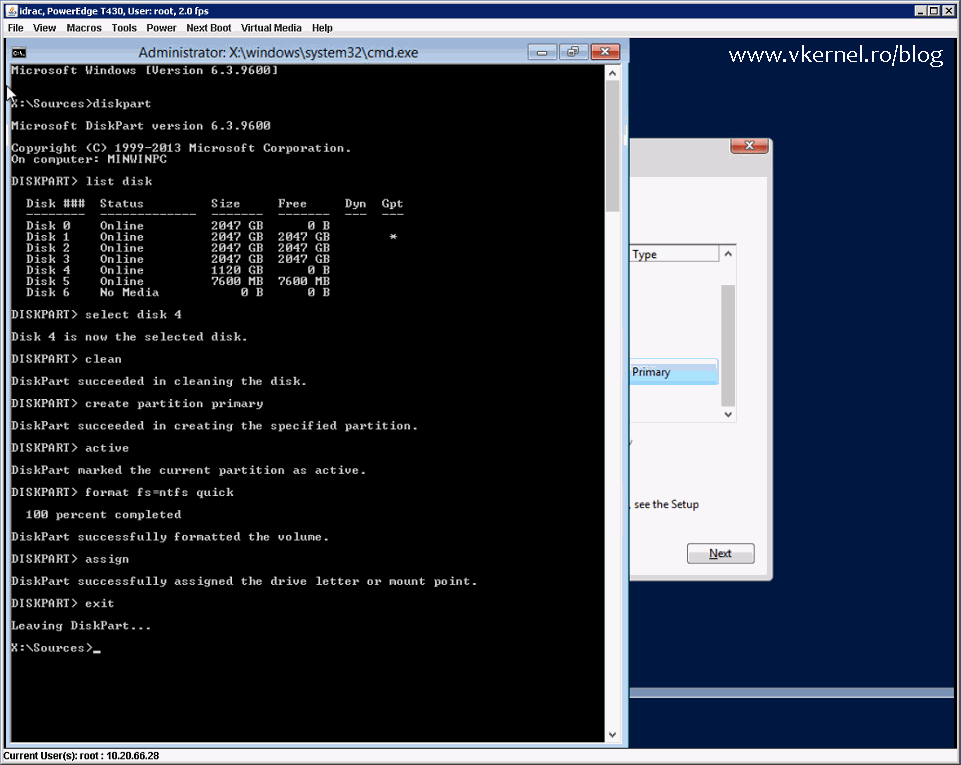


Protect end users from accidentally modifying utility partitions by identifying them using a GPT attribute.
Create boot partition with diskpart windows#
This allows end users to perform actions such as resizing the Windows partition without affecting system utilities. Other utility partitionsĪny other utility partitions not managed by Windows must be located before the Windows, data, and recovery image partitions. The MSR is a reserved partition that does not receive a partition ID. In Windows 10, the size of the MSR is 16 MB.Īdd an MSR to each GPT drive to help with partition management. 512 bytes x 65527 = 32 MB, which is less than the 100 MB minimum size for this partition. The minimum partition size of FAT32 drives is calculated as sector size (4KB) x 65527 = 256 MB.Īdvanced Format 512e drives are not affected by this limitation, because their emulated sector size is 512 bytes. This partition is managed by the operating system, and should not contain any other files, including Windows RE tools.įor Advanced Format 4K Native drives (4-KB-per-sector) drives, the minimum size is 260 MB, due to a limitation of the FAT32 file format. The minimum size of this partition is 100 MB, and must be formatted using the FAT32 file format. This partition is usually stored on the primary hard drive.

On GPT drives, this is known as the EFI System Partition, or the ESP. The device must contain a system partition. Additional drives may use either the GPT or the master boot record (MBR) file format.Ī GPT drive may have up to 128 partitions.Įach partition can have a maximum of 18 exabytes (~18.8 million terabytes) of space. When you deploy Windows to a UEFI-based device, you must format the hard drive that includes the Windows partition by using a GUID partition table (GPT) file system.
Create boot partition with diskpart update#
If you use a custom partition layout on Windows 10 or Windows 11 for desktop editions (Home, Pro, Enterprise, and Education), update the push-button recovery script so the recovery tools can recreate the custom partition layout when needed.


 0 kommentar(er)
0 kommentar(er)
